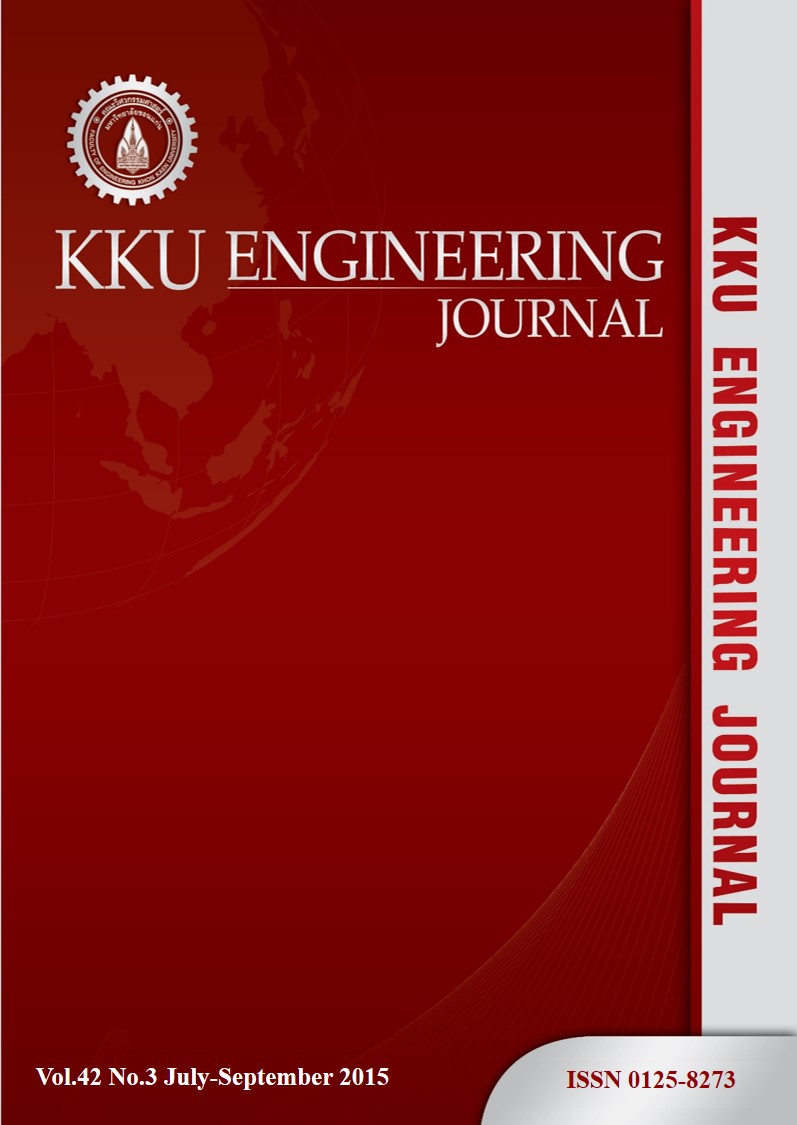Analysis of a back flashover across insulator strings on a 115 kV transmission line tower by PSCAD
Main Article Content
Abstract
Lightning striking on a transmission tower induces high ground potential rise and high voltage at tower arms in which potential is normally at ground level, and subsequently causes overvoltage across an insulator string. If this overvoltage is higher than the withstanding voltage of the insulator string according to the v-t (voltage-time) curve, back flashover phenomena will occur and this event may cause outage. The main objective of this paper is to study the factors influencing the back flashover phenomena. The computer program PSCAD/EMTDC (Power System Computer Aided Design/Electromagnetic Transients including DC) is used to simulate lightning striking on a transmission tower 115kV. Lightning current, transmission towers, ground resistance, insulator strings and back flashover phenomena are modeled. Main simulations are lightning striking on different towers, different soil resistivity, different lightning current magnitudes and wave shapes, different locations, and different phase angles of source voltage. Simulation results show that the higher tower encounters higher induced voltage. A back flashover occurs at the top tower arm easier than at the middle and lower arms. The higher soil resistivity induces higher voltage. The larger lightning current magnitude impacts on higher induced voltage. The longer rise time of lightning current generates lower induced voltage. Lightning strikes directly on tower generate higher voltage than that of striking on overhead ground wires.
Article Details
How to Cite
Anekthanasuwan, W., Jumrain, P., Junpradit, T., & Petcharaks, N. (2015). Analysis of a back flashover across insulator strings on a 115 kV transmission line tower by PSCAD. Engineering and Applied Science Research, 42(3), 226–234. retrieved from https://ph01.tci-thaijo.org/index.php/easr/article/view/38300
Issue
Section
ORIGINAL RESEARCH
This work is licensed under a Creative Commons Attribution-NonCommercial-NoDerivatives 4.0 International License.



